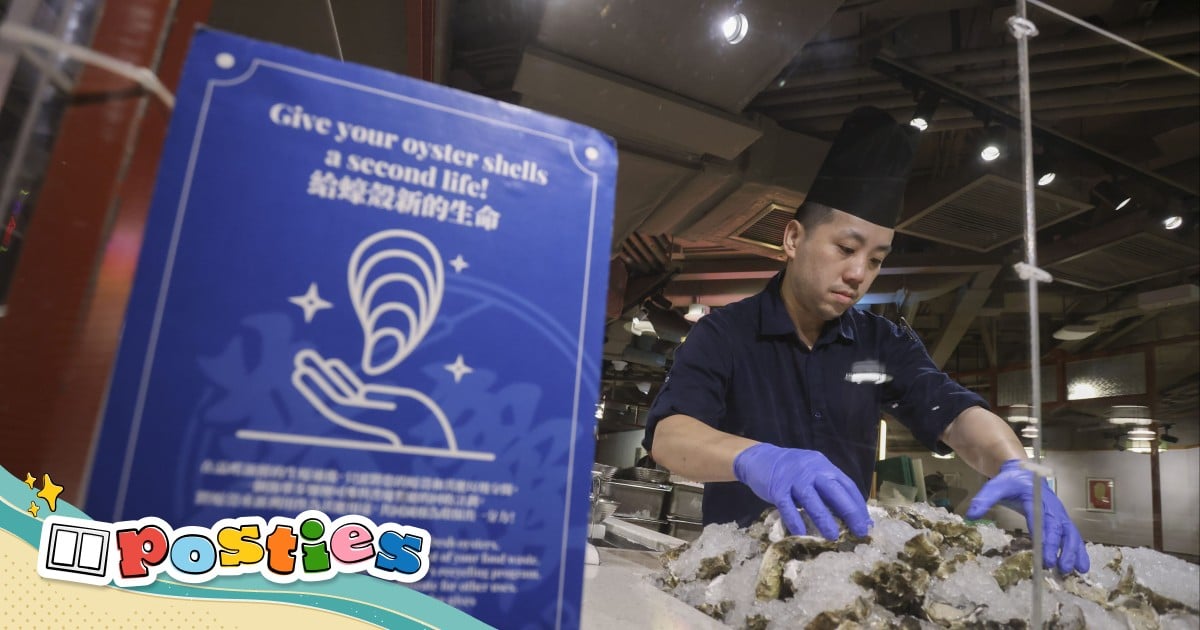Difficulty: Summiteer (Level 3)
A company in Hong Kong processes oyster shells into materials for building buildings.
Limestone is an important component of cement. Oyster shells are 91 percent limestone, making them perfect for making cement.
Green Island Cement in Hong Kong is working on an upcycling project to turn oyster shells from restaurants into building materials. They want to reduce waste in landfills while meeting the enormous demand for cement.
Teamwork is key
Two hotels, Eaton HK and The Langham, are partners in this program. They saved eight tons of oyster shells for upcycling in the first 17 months of the project.
Harvey Thompson, managing director of Eaton HK, said his employees supported the idea.
For Thompson, the oyster program was an opportunity to raise awareness of sustainability among everyone involved.
“When our own teams understand it, they go out and send that message home too,” he explained.
In addition to training employees, Thompson also ensures that restaurant customers and hotel guests know about these sustainability efforts.
“We wanted to…make sure all of our guests saw the oyster shells. They were taking part in something [that] Maybe they didn’t realize it at the time,” he said.

Thompson said learning about this project could encourage people to be more sustainable in their everyday lives.
According to Raymond Cheung Wai-man, operations and environment department manager at Green Island Cement, other hotels were reluctant to join the initiative because cleaning and storing the oysters meant more work for hotel staff.
“Last year we also tried to contact other hotels [did not get] “There are a lot of positive reactions,” Cheung said.
However, Thompson is confident that other hotels have the means to join this project, noting that it will take collaboration to make a difference.
Youth is the future
Both Thompson and Cheung believe that the key to the success of this program in the coming years is the normalization of oyster upcycling and the involvement of young people.
“Young people have creative minds, and what wasn’t possible 10 years ago is possible next year or the year after,” Thompson said. “I think they have a great chance by letting their creativity run wild and thinking about things differently in the future.”
Cheung encouraged young people to overcome adversity when seeking a solution to a societal problem.
“It doesn’t stop when you face a challenge,” he said. “These are the small steps that we have to overcome to make the whole thing work. Just don’t stop when you hit the first hurdle.”
Use the puzzle below to test your knowledge of the vocabulary in the story.
Suggested answers
-
Stop and think: What are the benefits of upcycling oyster shells? Upcycling oyster shells helps meet the huge demand for cement. It promotes sustainability as it uses a common natural resource to produce cement. It also reduces waste, as oyster shells often end up in landfills.
-
Read and respond: Why are oyster shells good for making cement? Cement is mostly limestone and oyster shells are 91 percent limestone. This means the shells can be easily made into cement.
-
Think back: Why have other hotels decided not to participate in this project? The other hotels Cheung contacted did not want to participate because it would put a strain on restaurant staff. Instead of simply throwing away the shells, employees would actually have to thoroughly clean the shells and save them for Green Island Cement.
